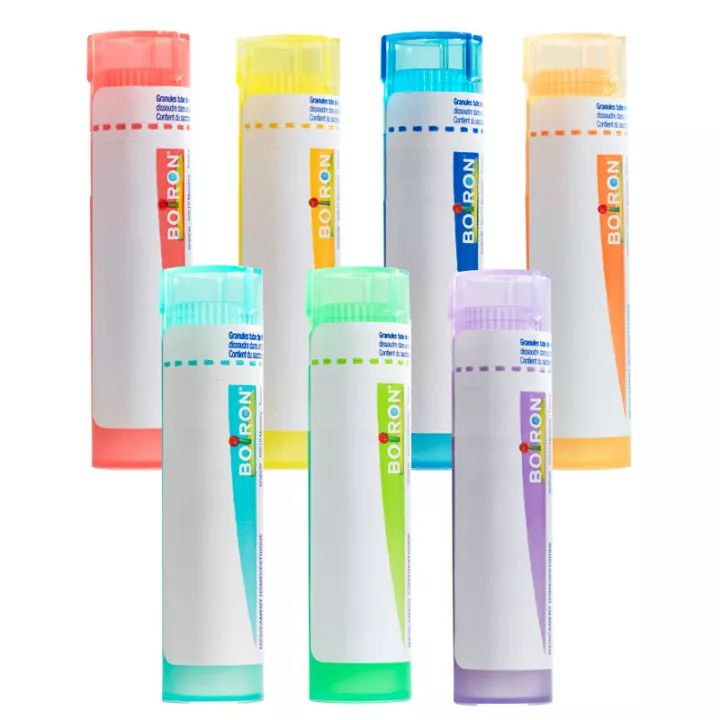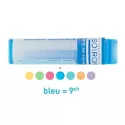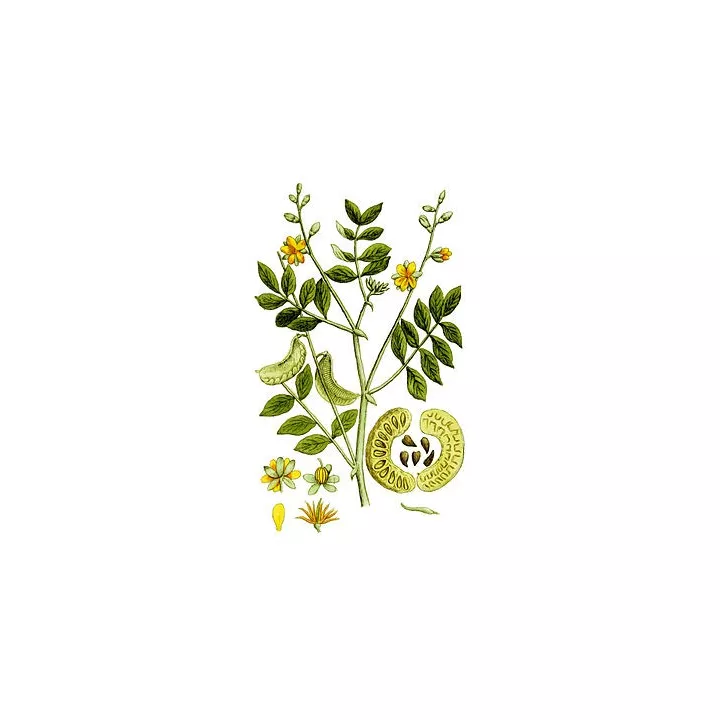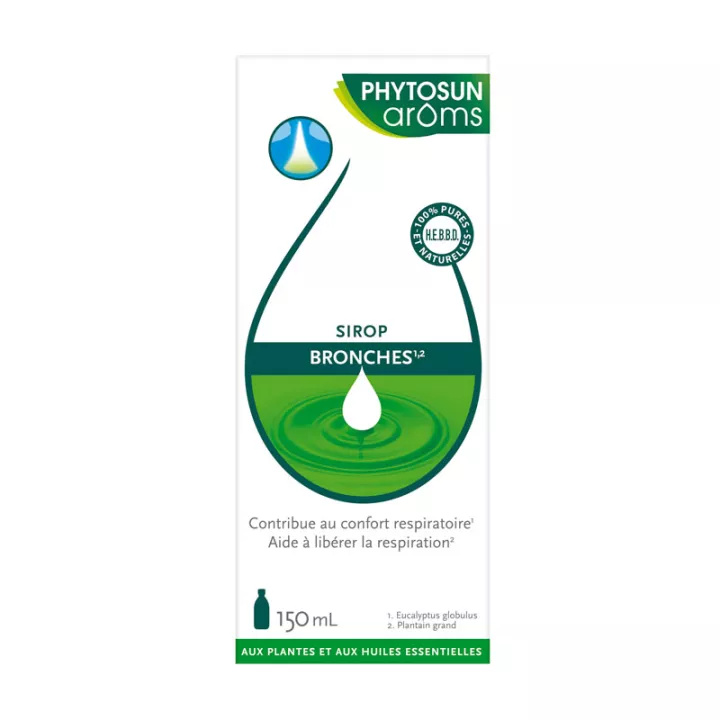Senega Boiron : Homeopathic Treatment for Bronchial Inflammation and Acute Bronchitis
Senega 9CH, 15CH homeopathic monodose Boiron
Registered medicine: EH00950
Listed in the pharmacopoeia
Origin : Vegetal
Senega is a homeopathic remedy of plant origin which derives its mother tincture from the roots of polygala senega, a variety of plant better known as Virginia polygala.
Senega offers a natural therapeutic solution for improving respiratory function and treating bronchial ailments. Its availability in various formulations and dilutions ensures a personalized, flexible approach, underlining homeopathy's commitment to providing holistic, individualized care in harmony with each patient's unique needs.
Senega homeopathic indications
Senega homeopathic medicines in single-dose globules can be used for a variety of symptoms, so it is not possible to determine the indications and dose of a specific preparation. This Senega homeopathic remedy is mainly indicated for the treatment of respiratory tract disorders. In particular, Senega can be used to treat acute bronchitis. It is the ideal remedy for pathologies accompanied by a dry, violent cough. It is especially recommended for subjects with respiratory weaknesses, particularly the elderly and infants. Unlike allopathic medicines, Senega has the advantage of treating the condition as a whole.
In fact, this Senega homeopathic remedy simultaneously treats the coughing fit while decongesting the bronchi by promoting mucus rejection.
The homeopathic doctor selects the appropriate medicine, dilution and dosage according to the patient's state of health and characteristic symptoms.
Soothe Bronchial Inflammation with SENEGA 9CH Boiron Homeopathic Granules
The Natural Solution for Acute Bronchitis and Difficult Expectoration
SENEGA 9CH Boiron Homeopathic Granules is a homeopathic medicine effective against bronchial inflammation, particularly in cases of acute bronchitis. It helps relieve symptoms such asdifficult expectoration, often accompanied by reduced respiratory capacity, which can be particularly worrying in the elderly and babies. Find out how this natural remedy can help you breathe easier again.
Treating acute bronchitis: breathing easier
Acute bronchitis is an inflammatory condition that affects the respiratory tract, leading to fever and coughing episodes. Conventional treatment often focuses on suppressing symptoms, notably by usingcough suppressants. However, coughing is the body's natural reaction to free the airways from obstructing secretions. This is where Senega comes into its own: it offers a homeopathic solution that not only soothes coughs but also helps to evacuate mucus, offering a double therapeutic benefit.
Escape the discomfort of bronchial inflammation
If you suffer from acute bronchitis with difficult expectoration, SENEGA 9CH Boiron Homeopathic Granules can offer welcome relief. This homeopathic medicine works gently to soothebronchial inflammation and facilitate expectoration. Its effectiveness in reducing coughing and helping to expel secretions makes it useful even in cases of asthma, where it can be used as an adjunctive treatment to manage attacks.
Why choose SENEGA 9CH Boiron Homeopathic Granules for Acute Bronchitis?
- Natural treatment: SENEGA 9CH Boiron Homeopathic Granules offers a natural treatment for acute bronchitis, eliminating the need for potentially harmful chemical drugs.
- Relief of Inflammation: By soothing bronchial inflammation, this homeopathic medicine enables you to breathe more easily and regain your respiratory well-being.
- Easy Expectoration: Don't let difficult expectoration worry you. SENEGA 9CH Boiron Homeopathic Granules help you get rid of mucus and regain optimal respiratory comfort.
Treatments and conditions associated with Senega use
Senega is distinguished by its spectrum of therapeutic action, covering a wide range of respiratory pathologies. It is associated with the treatment of a number of conditions, including
- Asthma: By contributing to expectoration, Senega can help manage asthma symptoms, reducing the frequency and intensity of attacks.
- Bronchitis: Its ability to soothe coughs and facilitate the elimination of secretions makes it a relevant choice for cases of bronchitis, whether acute or chronic.
- Emphysema: Although emphysema requires comprehensive medical management, Senega can be used to relieve certain symptoms, such as difficulty in expectoration.
- Tracheitis: Senega's properties can also be beneficial in the treatment of tracheal inflammation, helping to reduce dry, irritating coughs.
Senega instructions for use and dosage
Remove tab, invert tube and pull cap slightly. Place all the globules in the dose under the tongue. Do not touch homeopathic globules with your fingers. The globules in Senega single-dose tubes are absorbed in one go, dissolving slowly under the tongue.
Use a mint-free toothpaste (such as Homéodent Boiron).
When it comes to countering bronchial inflammation, particularly to soothe coughing episodes and alleviate expectoration difficulties, the use of Senega in low or medium dilutions is frequently recommended. Dilutions of 5 CH or 7 CH are particularly suitable for this purpose. For optimum effectiveness, granules should be taken every 2 hours, until the cough becomes significantly more productive and mucus is more easily expelled.
If symptoms improve, continue treatment with the same dilution of Senega 5 CH or 7 CH, but adjust the frequency to 3 granules three times a day: morning, noon and evening. This method supports the healing process, gradually reducing inflammation of the respiratory tract and facilitating expectoration, while modulating the frequency of intake according to the improvement in the state of health.
How to use Senega Boiron
It is crucial to follow the dosage recommendations prescribed by a healthcare professional to ensure optimal use of Senega in your care protocol.
Is Senega suitable for everyone?
Senega may be indicated for people suffering from bronchial inflammation, acute bronchitis and difficult expectoration, but a medical consultation is recommended for a personalized assessment and prescription.
When can improvement be observed?
Results may vary according to the individual and the severity of respiratory problems. Improvement may be noted after several days of regular use. Regular follow-up with a healthcare professional is recommended to assess treatment efficacy.
Packaging and contents
Senega, derived from the root of the Seneca snakeroot plant, is a homeopathic remedy of plant origin used mainly to treat respiratory tract disorders. Registered under number EH00950 and listed in the French and European Pharmacopoeia, it is available in doses and tubes, as well as for magistral preparations, offering a variety of dilutions to meet specific therapeutic needs.
Origin and properties
Senega is prepared from the root of Polygala Senega, a plant known for its expectorant and stimulant properties on bronchial secretions. In homeopathy, it is prepared according to the principles of dilution and dynamization, enabling its virtues for the respiratory system to be exploited safely and effectively.
Available formulations
Doses and tubes: The remedy is available in several potencies, with doses at 9 CH and 15 CH, and tubes from 4 CH to 15 CH. These different dilutions offer flexibility in the choice of treatment, allowing the dose to be adjusted according to the patient's symptoms and sensitivity.
Magistral preparations: For even greater personalization, Senega can also be prepared in Hahnemannian dilutions starting at 2 CH. This option reinforces the importance of an individualized approach to homeopathy.
Therapeutic applications
Senega is often recommended for :
- Bronchial disorders, particularly in cases of difficult productive coughs, helping to fluidify and evacuate bronchial secretions.
- Symptoms of bronchitis and flu, helping to relieve congestion and improve breathing.
- Prevention of complications of respiratory ailments, by stimulating the respiratory system's natural defenses.
Precautions for use
Warning
Contains sucrose.
Giving Senega homeopathic globules to babies and children
For Senega globules, dissolve in 100ml of water. As the globules take a very long time to dissolve, it is necessary to prepare your mixture in advance.
Homeopathy and pregnancy
Senega homeopathic remedies have no chemical toxicity, no contraindications, no interaction with other drugs, and no adverse effects linked to the quantity of product ingested. Pregnant women can treat themselves with no known risk to themselves or their unborn child, but it is preferable to seek advice.
Frequency of homeopathic use
For acute conditions, Senega homeopathic remedies should be taken every hour until symptoms improve. From then on, take them 3 or 4 times a day, spacing them out, then stop gradually.
For chronic conditions, low-dilution remedies (> 9CH) should be taken 1 or 2 times a day, while in-depth Senega remedies should be taken once a week, or even once a month. This decision is left to the homeopath.
What to do if there is no improvement within 24 hours
Certain pathologies cannot be treated with homeopathy simply by self-medicating with Senega. Their severity requires medical advice from a homeopathic doctor. This doctor will judge whether your condition can be treated with homeopathy alone, or whether your treatment needs to be supplemented with allopathy.



















